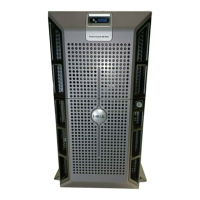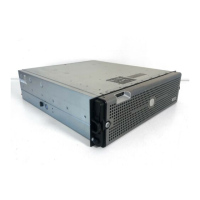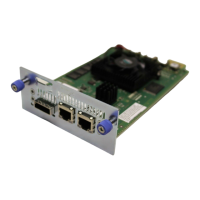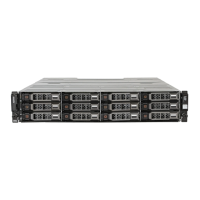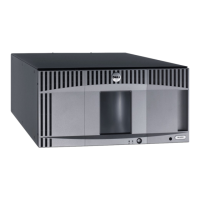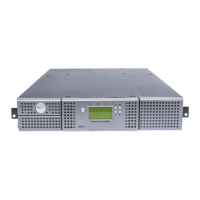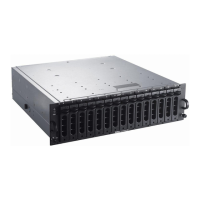When you change the warning threshold percent and repository full policy, you can apply the changes to
one or several snapshot virtual disks. The following example uses the set (snapshot) virtualDisk
command to change these properties on more than one snapshot virtual disk:
client>smcli 123.45.67.89 -c "set virtualDisks
[\"Mars_Spirit_4-1\" \"Mars_Spirit_4-2\"
\"Mars_Spirit_4-3\"] warningThresholdPercent=50
repositoryFullPolicy=failSourceWrites;"
The following example is the script file version of the command:
set virtualDisks ["Mars_Spirit_4-1"
"Mars_Spirit_4-2" "Mars_Spirit_4-3"]
warningThresholdPercent=50 repositoryFullPolicy=
failSourceWrites;
Stopping And Deleting A Snapshot Virtual Disk
When you create a snapshot virtual disk, copy-on-write immediately starts running. As long as a snapshot
virtual disk is enabled, storage array performance is affected by the copy‑on‑write operations to the
associated snapshot repository virtual disk. If you no longer want copy-on-write operations to run, you
can use the stop snapshot virtualDisk command to stop the copy‑on‑write operations. When you
stop a snapshot virtual disk, the snapshot virtual disk and the repository virtual disk are still defined for the
source virtual disk; only copy-on-write has stopped. The following example stops a snapshot virtual disk:
client>smcli 123.45.67.89 -c "stop snapshot
virtualDisks [\"Mars_Spirit_4-2\" \"Mars_Spirit_4-3\"];"
The following example is the script file version of the command:
stop snapshot virtualDisks ["Mars_Spirit_4-2"
"Mars_Spirit_4-3"];
When you stop the copy-on-write operations for a specific snapshot virtual disk, only that snapshot
virtual disk is disabled. All other snapshot virtual disks remain in operation.
Re-creating The Snapshot Virtual Disk
To restart a copy-on-write operation, use the recreate snapshot virtualDisk command. This
command starts a fresh copy-on-write operation using an existing snapshot virtual disk. When you restart
a snapshot virtual disk, the snapshot virtual disk must have either an Optimal or a Disabled state.
The following conditions then occur:
• All copy-on-write data previously on the snapshot repository virtual disk is deleted.
• Snapshot virtual disk and snapshot repository virtual disk parameters remain the same as the
previously disabled snapshot virtual disk and snapshot repository virtual disk. You can also change the
userLabel, warningThresholdPercent, and repositoryFullPolicy parameters when you
restart the snapshot virtual disk.
• The original names for the snapshot repository virtual disk are retained.
Preparing Host Servers To Re-create A Snapshot Virtual Disk
CAUTION: Before you create a new point-in-time image of a source virtual disk, stop any data
access (I/O) activity or suspend data transfer to the source virtual disk and snapshot virtual disk to
ensure that you capture an accurate point-in-time image of the source virtual disk. Close all
applications, including Windows Internet Explorer, to make sure all I/O activity has stopped.
74

